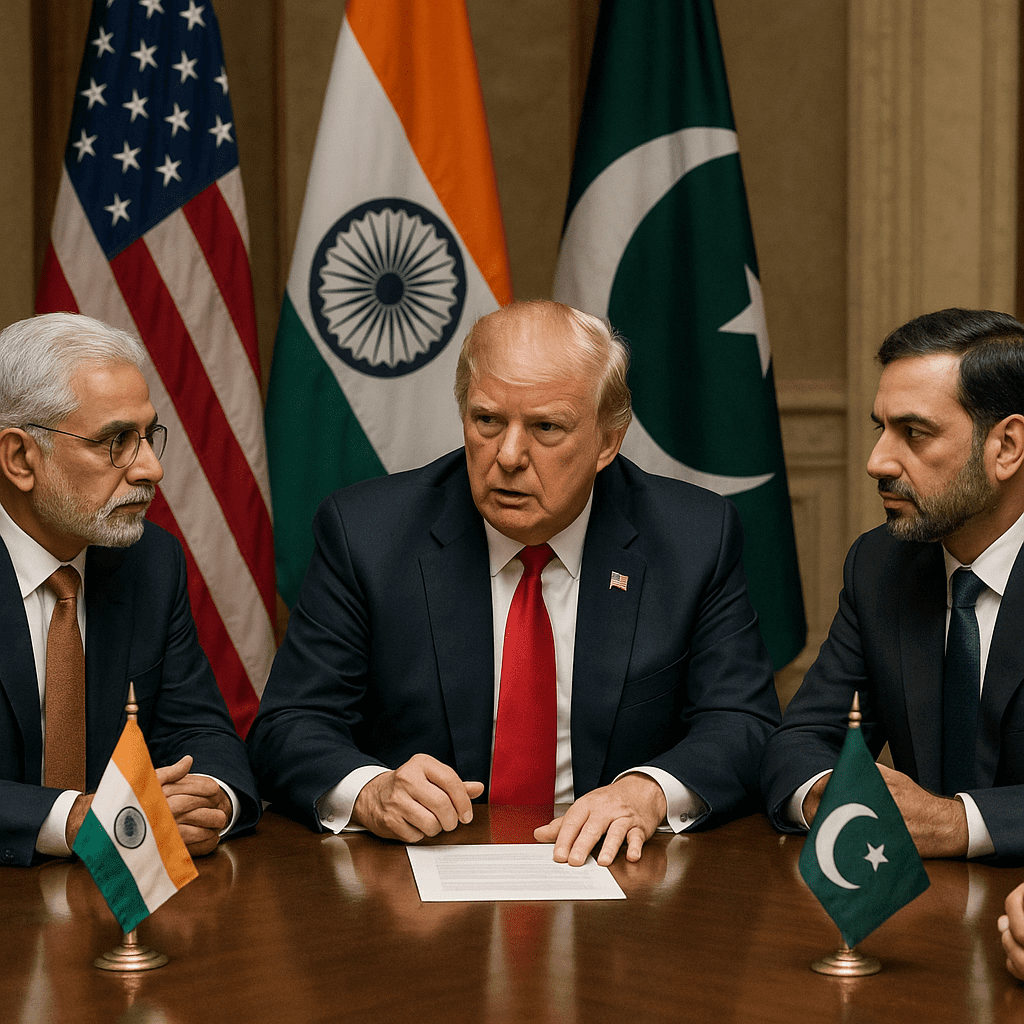In a decisive demonstration of diplomatic leadership, President Donald Trump has successfully brokered a ceasefire between India and Pakistan, two nuclear-armed neighbors whose recent hostilities had escalated to alarming levels. This intervention underscores the administration’s commitment to global stability and the adept handling of complex international conflicts.
The recent tensions were ignited by a terrorist attack in Indian Kashmir, resulting in 26 fatalities. India attributed the attack to militants supported by Pakistan, leading to retaliatory airstrikes on May 7 targeting alleged terrorist infrastructure. Pakistan responded by downing Indian aircraft and launching its own strikes, culminating in an Indian missile attack on Pakistan’s Nur Khan air base, situated near its nuclear command center. This sequence of events brought the region perilously close to a broader conflict.
Recognizing the gravity of the situation, the U.S. administration, led by Secretary of State Marco Rubio and Vice President JD Vance, engaged in intensive diplomatic efforts. Secretary Rubio conducted extensive communications with officials from both nations, facilitating a dialogue that ultimately led to the cessation of hostilities. On May 10, a formal ceasefire was established following direct communication between military leaders from India and Pakistan, influenced by U.S. mediation. President Trump announced the cessation of hostilities, commending both nations for their restraint and decision to de-escalate.
This successful mediation highlights the administration’s proactive approach to international diplomacy and its dedication to preventing nuclear escalation. The swift and effective response not only averted a potential catastrophe but also reinforced the United States’ role as a stabilizing force in global affairs.
In the aftermath of the ceasefire, attention has shifted to economic considerations, particularly trade negotiations between India and the United States. President Trump’s proposed “reciprocal” tariffs have prompted India to seek a trade agreement to prevent potential economic repercussions. India has offered to reduce its tariff gap from 13% to below 4%, aiming to finalize an agreement before the 90-day freeze on new tariffs expires on July 8. This development reflects the administration’s commitment to fair trade practices and the pursuit of economic policies that benefit American interests.
While the ceasefire has been welcomed, it has also reignited discussions about the longstanding Kashmir dispute. President Trump’s offer to mediate a lasting solution has been met with varying responses. Pakistan has expressed openness to third-party involvement, whereas India maintains that Kashmir is a bilateral issue and opposes external mediation. This divergence underscores the complexities inherent in regional conflicts and the challenges associated with achieving enduring peace.
The administration’s diplomatic efforts have been complemented by strategic economic initiatives. President Trump secured a projected $600 billion in investment commitments from Saudi Arabia, encompassing major defense and corporate purchases. However, detailed breakdowns account for $282.8 billion, and historical precedents suggest that such promises may not fully materialize. This situation illustrates the intricate nature of international agreements and the necessity for meticulous follow-through to realize projected benefits.
In the realm of defense policy, the administration’s actions have been marked by decisive measures aimed at safeguarding national and international security. The recent interception of a missile from Yemen by the Israeli military, coinciding with President Trump’s visit to the Gulf region, underscores the persistent threats in volatile areas. The administration’s ceasefire agreement with Yemen’s Houthi rebels, who have pledged to halt attacks on U.S. vessels, reflects a strategic approach to mitigating risks to American assets. However, the Houthis’ continued targeting of Israel with missiles and drones highlights the multifaceted challenges in achieving comprehensive regional stability.
The administration’s commitment to military readiness is evident in its support for defense initiatives and veteran support systems. The proposed expansion of military funding aims to enhance operational capabilities and ensure preparedness for emerging threats. This approach necessitates careful consideration of procurement processes, resource allocation, and the long-term sustainability of defense programs. The administration’s focus on efficiency and accountability in defense spending aligns with its broader objectives of fiscal responsibility and strategic resource management.
In conclusion, President Trump’s administration has demonstrated a robust commitment to addressing global military conflicts through strategic diplomacy, economic initiatives, and defense policies. While challenges persist, the administration’s proactive approach reflects a dedication to safeguarding national interests and promoting international stability. Continued efforts to refine and implement these policies will be essential in navigating the complexities of global affairs and ensuring the security and prosperity of the United States.
—
Ryan Mitchell reports on military funding, defense policy, and veteran support systems. He is a graduate of The Citadel and served as a civilian analyst for the Department of Defense before entering journalism. His reporting draws on firsthand knowledge of procurement systems, veterans’ programs, and the long-term cost of military readiness.



